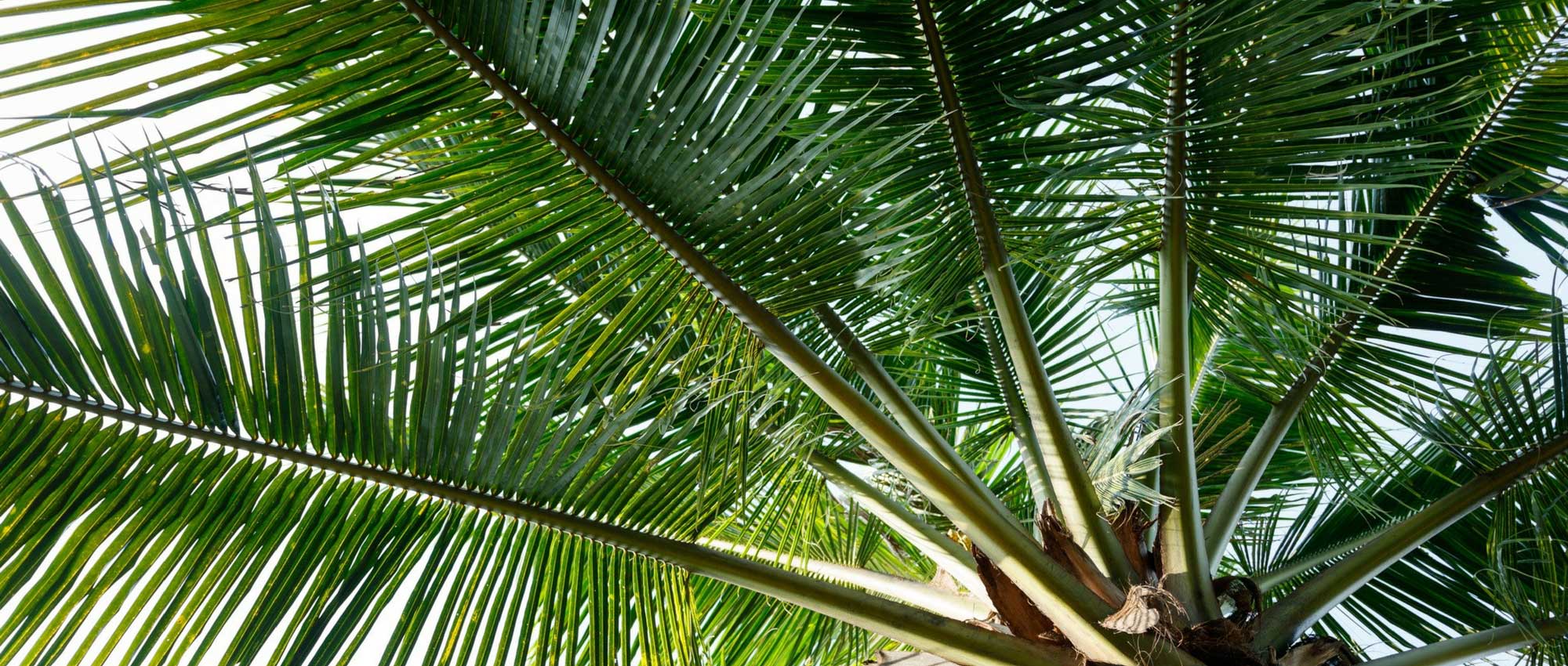
Which palm should I choose for my garden?
Buying guide
Contents
Essential for adding an exotic touch to the garden, palms are majestic plants, consisting of a tall, straight stipe bearing at the top a tuft of large leaves, often plicate and fan-shaped. They have an unmistakable graphic silhouette! There are many species with very different characteristics: some palms are tender, others very hardy, some remain relatively compact while others become monumental, and still others stand out for their blue or silvery leaves… So it’s hard to find your way among all these species and varieties. That’s why I invite you to discover our guide to choosing the right palm for your situation and the effect you want to achieve!
Depending on your climate
Hardiest palms
Contrary to what one might think, some palms are very cold-hardy! Thus, in cooler regions I strongly recommend Trachycarpus fortunei, also called hemp palm, which tolerates down to −18 °C. It is one of the easiest palms to grow, and can be planted across most of France. Less well known, Rhapidophyllum hystrix is the champion of hardiness, as it can stand temperatures below −20 °C! It prefers a cool, shady site and is ideal for cold, damp climates. It bears attractive fan-shaped leaves and a stipe covered with long thorns, which earned it the nickname Needle palm. Dwarf palm Sabal minor is also very hardy, tolerating temperatures down to −18 °C. It has a very short, partly buried stipe from which palmate leaves emerge. In the garden, it favours shade or semi-shade. Finally, if you prefer a palm with pinnate leaves, choose Jubaea chilensis, which tolerates −15 °C. It is a very imposing palm, with a massive stipe and a crown of long leaves at the top.
The Chamaerops humilis, Brahea armata and Sabal palmetto are also relatively hardy (they tolerate temperatures falling between −10 and −12 °C), provided they are planted in free-draining soil, as they do not tolerate excess moisture in winter.
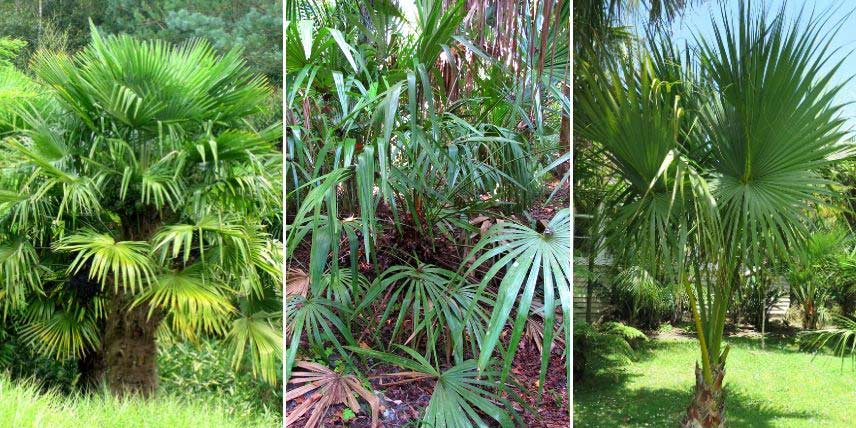
Three palms that tolerate cold well: Trachycarpus fortunei, Rhapidophyllum hystrix (photo Scott Zona) and Sabal minor (photo weta2000nz)
Discover our advice sheet: 7 hardy palms to plant almost anywhere in France and palms by climate
Palms for the Mediterranean basin and sheltered coastal regions
In warm Mediterranean climates, many more palm species can be cultivated. I particularly recommend Washingtonia filifera, or California fan palm. It bears attractive palmate leaves which, when they dry, remain attached to the palm, forming a kind of skirt around the stipe. You can also grow the magnificent Phoenix canariensis. Its majestic, imposing silhouette is admired. From the top of its thick stipe unfold long, gracefully arched pinnate leaves. As for the Mexican blue palm, Brahea armata, it has the advantage of being very drought-tolerant. It bears superb palmate leaves of silvery-blue colour. Finally, Butia capitata is also well suited to Mediterranean gardens. It is undemanding and easy to grow. I particularly like its pinnate, arching leaves divided into very fine segments.
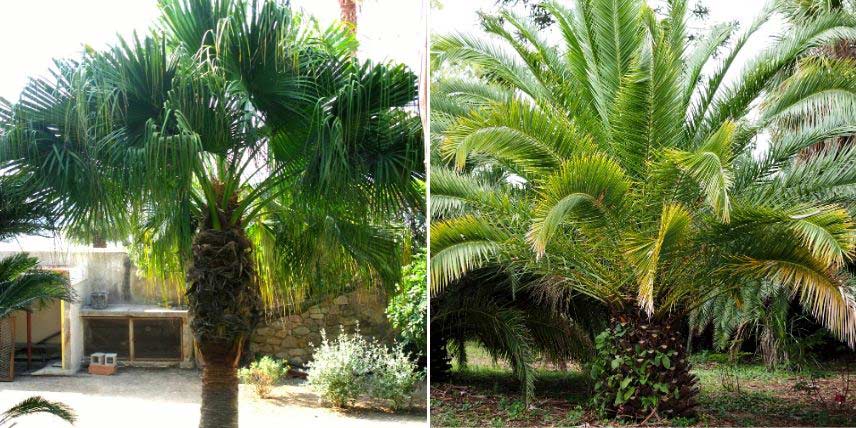
Washingtonia filifera and Phoenix canariensis will be perfect in a Mediterranean garden!
It is possible to protect a more frost-sensitive palm; for that, follow our advice in our other guide: How to protect it in winter? and if your climate really doesn’t allow it, discover 7 remarkable species that can be grown indoors.
Depending on exposure
Palms for shade
Indeed, some palms can be planted even in shade! This is the case of Rhapidophyllum hystrix, which, in addition to tolerating cold, prefers cool soils and sites sheltered from the sun. It is distinctive for its dense, broad and fairly low habit, with a very short stipe bearing palmate leaves. Likewise, the Sabal minor appreciates shade or partial shade. It is a small palm bearing large fan-shaped leaves, bluish-green. Moreover, these two palms have the advantage of being very hardy! In addition, their compact size allows creating a very attractive display by placing them in the shade of larger palms. Finally, the Trachycarpus fortunei also copes quite well with shaded situations.
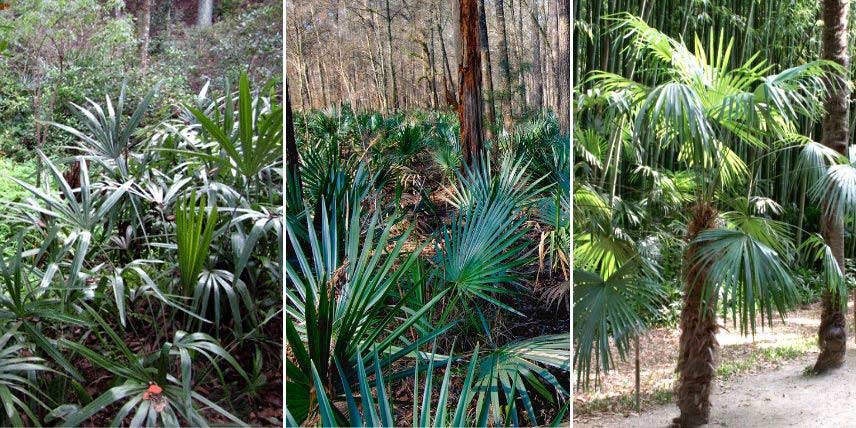
Three palms that adapt well to shaded situations: Rhapidophyllum hystrix (photo Homer Edward Price), Sabal minor (photo V.B. Williamson) and Trachycarpus fortunei (photo Georges Seguin)
Palms for full sun
Most palms thrive in full sun, as they need warmth and excellent light. This is the case, for example, of Washingtonia, Butia capitata, Phoenix canariensis, Brahea armata, Chamaerops humilis… However, it is best to avoid exposures that are excessively hot.
However, exposure also depends on geographical location: a palm that prefers partial shade can be planted in sun in northern France, while a palm that prefers full sun will more readily accept being placed in shade in southern France.
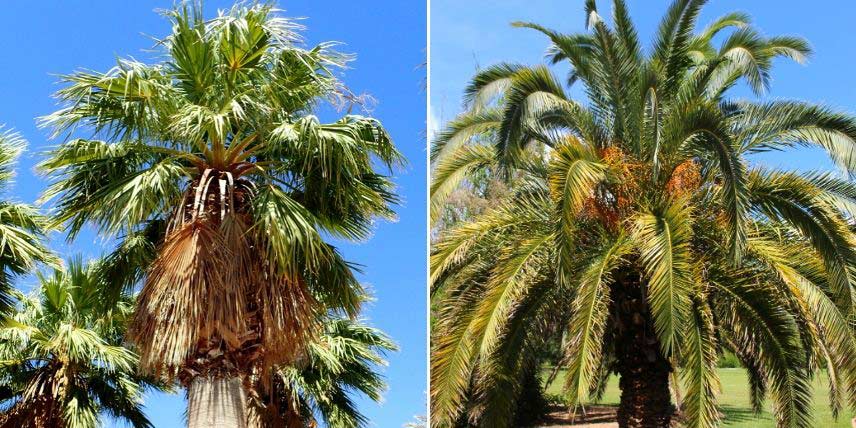
Washingtonia filifera (photo Krzysztof Ziarnek) and Phoenix canariensis (photo Michael Rivera) require a sunny, well-exposed position!
Discover other Palm trees
View all →Available in 5 sizes
Available in 1 sizes
Available in 1 sizes
Available in 1 sizes
Available in 1 sizes
Available in 4 sizes
Available in 2 sizes
Available in 1 sizes
Available in 1 sizes
Depending on growth and pruning
Large palms with majestic habit
The largest palm trees are perfect as specimens, for example in the middle of a short grass meadow, or in a row to line an avenue. Among them, Phoenix canariensis is an imposing palm that can reach 15 to 20 metres in height. Its long pinnate, arching leaves give it a truly elegant, majestic silhouette. Also discover the Syagrus romanzoffiana, a very slender, fast-growing palm that can reach up to 12 metres in height. However, it should be reserved for regions with mild climate. I appreciate its very light, feathery foliage! Also noteworthy is the imposing Jubaea chilensis, which can become very large, up to 20 metres tall. It has a thick, grey stipe that evokes an elephant’s leg. Its drawback is slow growth! Washingtonia filifera is also a palm that becomes large. It forms a thick, very tall stipe, and the dried leaves that remain attached to the stipe give it a truly imposing silhouette.
Discover our selection of large palms!
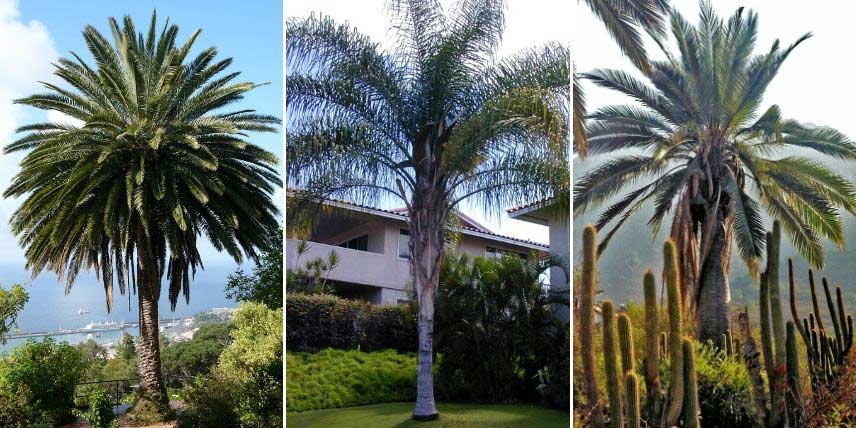
Some palms become particularly tall and imposing! Here, Phoenix canariensis (photo Amanda Grobe), Syagrus romanzoffiana (photo Forest & Kim Starr) and Jubaea chilensis (photo Jorge Leon Cabello)
Dwarf palms, for small gardens or growing in pots!
Some palms remain relatively compact, making them suitable for small gardens or for growing in pots. Discover, for example, Chamaerops humilis, a small, bushy palm that generally does not exceed 3.5 metres in height. It is nicknamed ‘Dwarf palm’. There is even an even smaller variety, Chamaerops humilis ‘Compacta’ (up to 2.5 metres). It adapts fairly well to cultivation in a large pot or container! Sabal minor is also a small palm, not exceeding 2 metres in height with a 1 metre spread. In general, cespitose palms, which form clumps composed of several trunks, remain relatively low. This is the case, for example, with Nannhorrops ritchiana and Rhapidophyllum hystrix (up to 3 metres tall).
Discover our selection of dwarf palms and our advice sheet on growing palms in pots
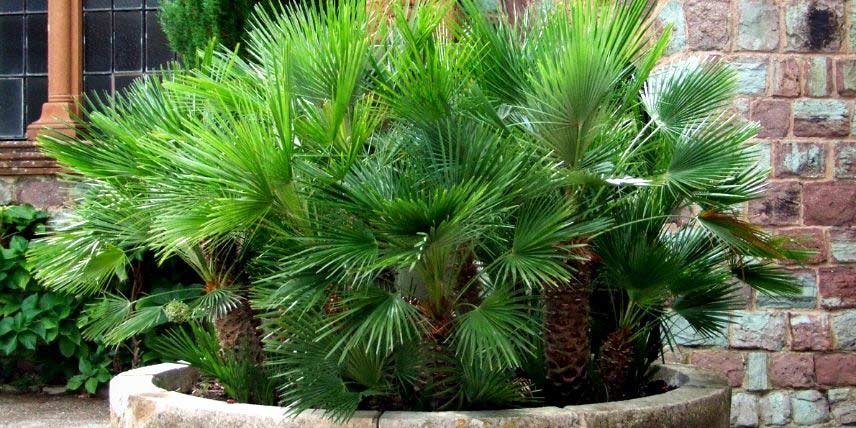
Chamaerops humilis is a small, bushy palm (photo Christophe Finot)
Depending on style and aesthetics
Cespitose palm or single-trunk palm?
Most palms form a single stipe, very straight, but some grow in cespitose clumps with several trunks. Phoenix canariensis and Washingtonia, for example, have a single impressive, very straight stipe topped by a crown of leaves. Their silhouette is impeccable, majestic. They are perfect as solitary specimens or planted in a row to line an avenue! Conversely, Chamaerops humilis forms clumps made of several stipes, giving impression of a small clump of palms. Same applies to Nannorrhops ritchiana. These palms are not as tall as others but form much broader clumps.
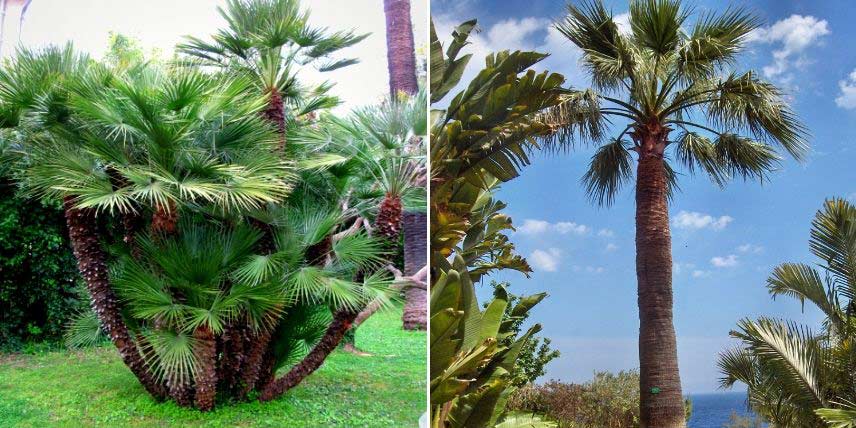
Chamaerops humilis grows in cespitose clumps, whereas Washingtonia filifera forms a single trunk (photo Georges Jansoone)
Palm with palmate or pinnate leaves?
Palms present very different looks depending on shape of their leaves. Leaves can be palmate, fan-shaped, which gives a very exotic effect. This applies to Chamaerops, Trachycarpus and Washingtonia. But leaves can also be pinnate, feather-like, which makes palm truly majestic and elegant. Examples include Butia, Phoenix canariensis and Jubaea chilensis. These pinnate-leaved palms are somewhat less common than others.
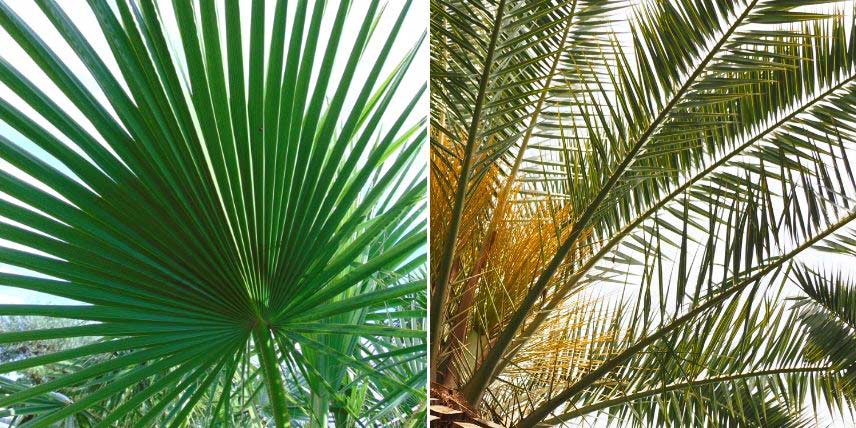
Palmate leaves of Washingtonia robusta, fan-shaped, and pinnate foliage of a Phoenix, feather-like.
Best palms with blue or silvery leaves
Some palms stand out for blue or silvery leaves. This is the case of Brahea armata, nicknamed “Mexican blue palm”. It bears beautiful palmate leaves, very pale, with metallic sheen. Leaves of Butia capitata also have a lovely bluish-green hue. Finally, some varieties have been selected by humans specifically for leaf colour: notably Nannorrhops ritchiana ‘Silver’, with silvery tones, and Chamaerops humilis ‘Cerifera’, which bears lovely blue-grey leaves. In garden, I recommend pairing these palms with other plants with blue or silvery leaves: Euphorbia myrsinites, blue fescue, agave, Yucca rostrata…
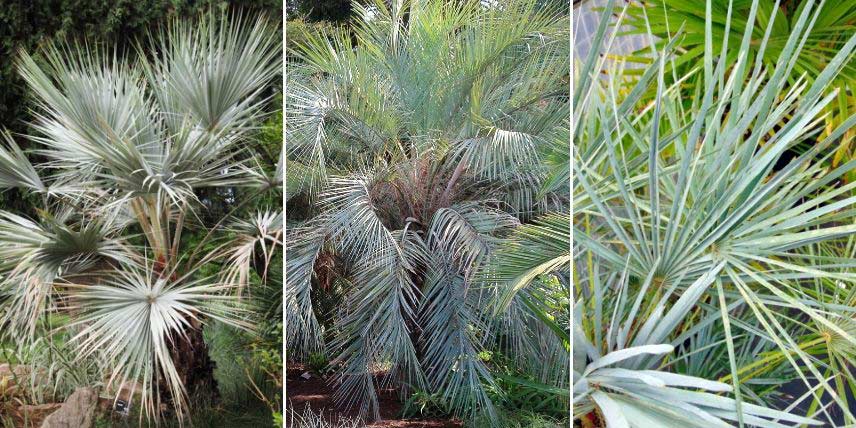
Blue-silver foliage of Brahea armata, Butia capitata (photo cultivar413) and Chamaerops humilis ‘Cerifera’
See our dedicated fact sheets to learn all about superb Chamaerops palms and Washingtonia.
Summary table
| Species | Hardiness | Height | Exposure | Notable ornamental interest |
| Brahea armata | -12 °C | 15 m | Sun | Palmate foliage, grey-blue |
| Butia capitata | -10 °C | 4–5 m | Sun | Pinnate leaves, bluish-green |
| Chamaerops humilis | -12 to -15 °C | 3.5 m | Sun | Small bushy palm, cespitose, with palmate leaves |
| Jubaea chilensis | -15 °C | 20 m | Sun | Long pinnate leaves, imposing stipe |
| Nannhorrops ritchiana ‘Silver’ | -10 °C | 2–3 m | Sun | Cespitose palm, silver leaves |
| Phoenix canariensis | -7 °C | 20 m | Sun | Large pinnate leaves, gracefully arched |
| Rhapidophyllum histrix | -20 to -25 °C | 2.5–3 m | Shade | Bushy palm, cespitose, with palmate leaves |
| Sabal minor | -18 °C | 2 m | Shade or part shade | Dwarf palm, palmate leaves, green-grey |
| Syagrus romanzoffiana | -7 °C | 12 m | Sun | Very slender palm, with fine pinnate leaves |
| Trachycarpus fortunei | -18 °C | 10 m | Sun or part shade | Stipe covered with brown fibres, palmate leaves |
| Trachycarpus wagnerianus | -17 °C | 6–7 m | Sun or part shade | Stipe covered with brown fibres, palmate leaves |
| Washingtonia filifera | -10 °C | 15–20 m | Sun | Imposing palm with palmate leaves, old leaves forming a skirt around stipe |
These values are indicative; hardiness and height of plant also depend on growing conditions, and may vary from one specimen to another.
Find out more
Discover our other tips for palms:
- Palms: how to plant, grow and care for them
- Palm: how to protect it in winter?
- Palm moth, Paysandisia archon: control and treatment
- Subscribe!
- Contents
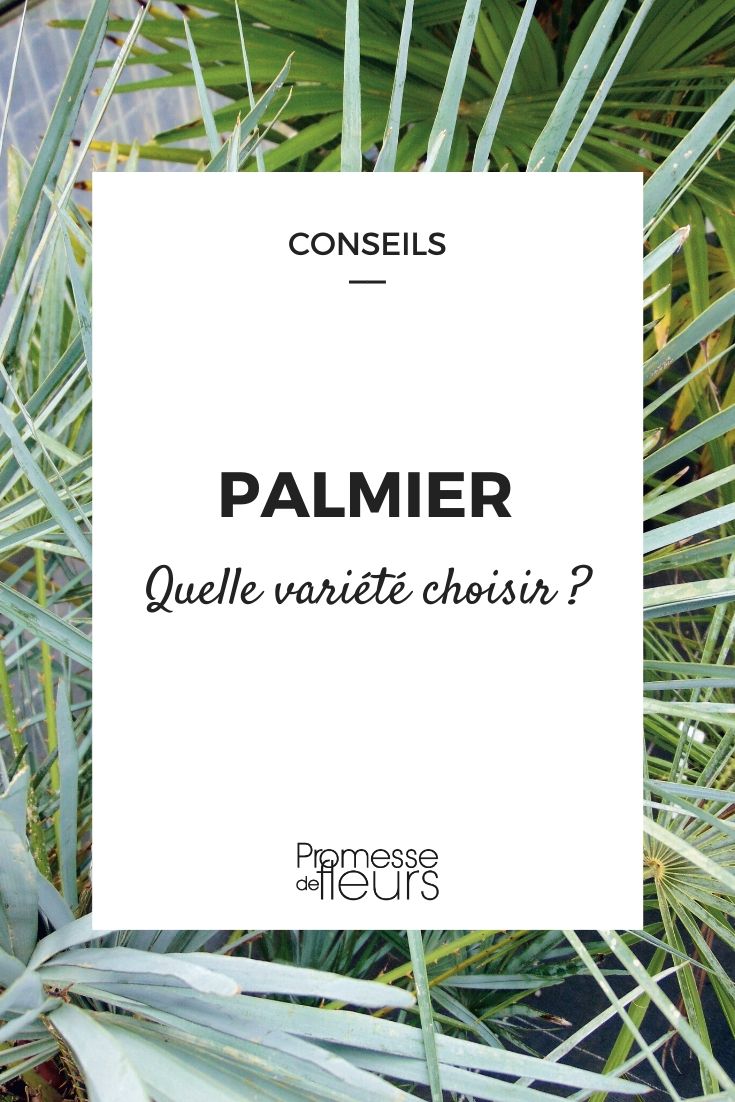































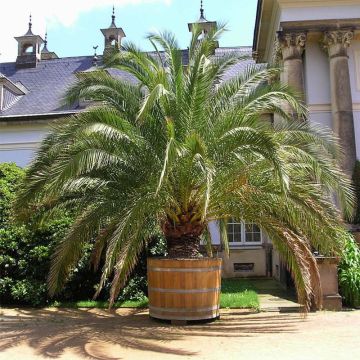
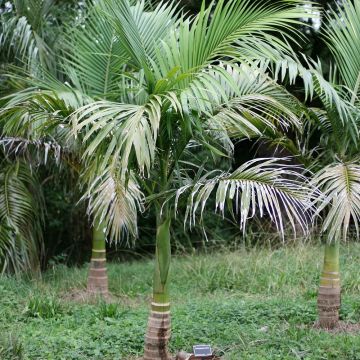

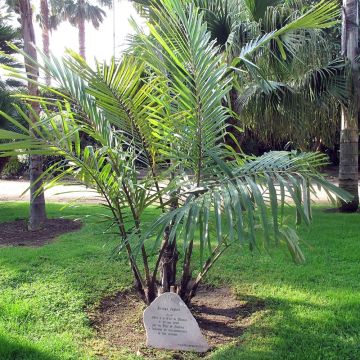
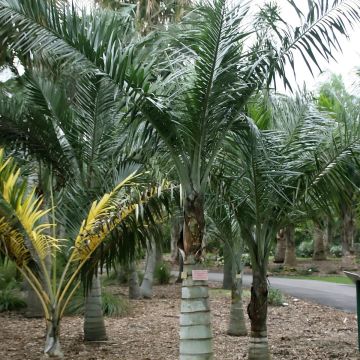
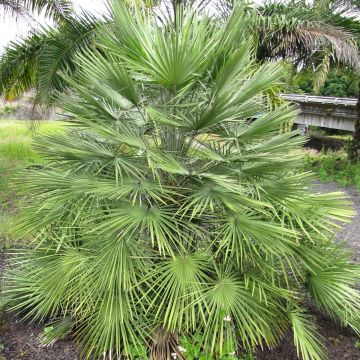
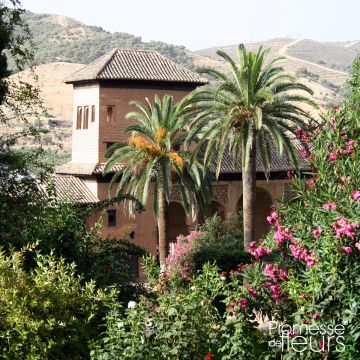
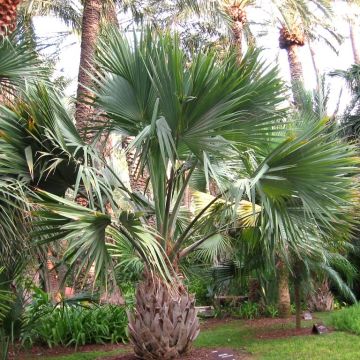
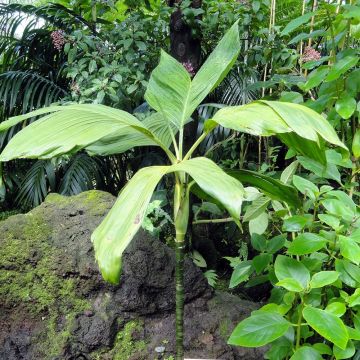

Comments